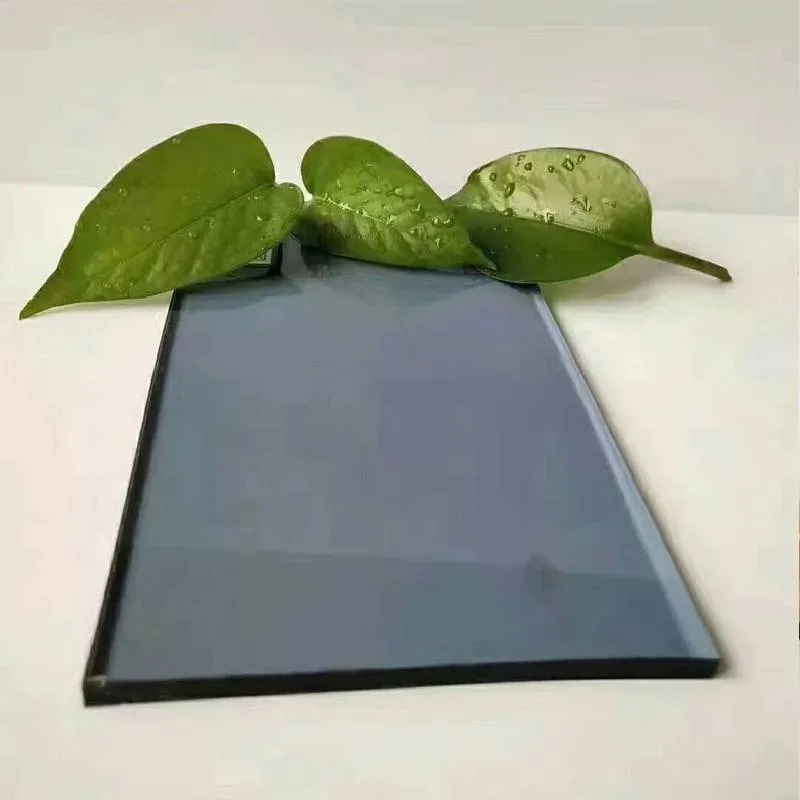The Advantages and Applications of Sun Reflective Glass
In recent years, the architectural and design industries have increasingly favored innovative materials that enhance energy efficiency and aesthetics. One such material gaining popularity is sun reflective glass. This specialized glass not only serves as a barrier against the sun's harsh rays but also plays a critical role in promoting sustainability and reducing energy consumption in buildings.
Sun reflective glass, as the name suggests, is designed to reflect a significant portion of solar radiation. This is achieved through a variety of advanced technologies and coatings applied to the surface of the glass. The reflective properties help regulate indoor temperatures by minimizing heat gain during the warmer months, thereby creating a more comfortable living and working environment. Consequently, this feature can lead to significant savings on air conditioning costs, making it an economically sound choice for homeowners and commercial property developers alike.
One of the primary benefits of sun reflective glass is its ability to improve energy efficiency. Buildings equipped with this type of glass require less energy for cooling, which in turn reduces their overall carbon footprint. As the world grapples with the consequences of climate change, using materials that enhance energy efficiency has become more important than ever. Moreover, many governments and municipalities offer incentives for the incorporation of energy-efficient materials in construction, further encouraging the use of sun reflective glass.
In addition to its energy-saving qualities, sun reflective glass can greatly enhance the aesthetics of a building. Available in a variety of colors and finishes, this glass can be tailored to match or accentuate the architectural design of any building. Its sleek and modern appearance lends a sophisticated touch, making it a popular choice for contemporary structures. Architects are increasingly utilizing sun reflective glass to create visually striking facades that not only capture attention but also serve practical purposes.
sun reflective glass
Sun reflective glass also provides excellent UV protection. Traditional glass allows a significant amount of ultraviolet (UV) radiation to penetrate, which can lead to fading of furniture, flooring, and artwork indoors. In contrast, sun reflective glass blocks a considerable percentage of these harmful rays, helping to preserve the integrity of interior furnishings. This makes it an ideal choice for spaces that house valuable items or where sun exposure could lead to substantial damage over time.
Safety and privacy are additional advantages associated with sun reflective glass. With increased levels of reflection, this glass can serve to obscure the view from outside while still allowing natural light to filter through. This feature is particularly appealing for residential properties where homeowners value their privacy. At the same time, the added layer of protection enhances safety by making it more difficult for potential intruders to see inside the building.
It's important to consider maintenance factors as well. Sun reflective glass is generally easy to clean and maintain, which is an added benefit for commercial buildings or high-rise apartments where cleaning can be logistically challenging. Modern coatings are often designed to resist dirt and grime, reducing the frequency and effort required for cleaning.
Despite its many benefits, the choice to use sun reflective glass must be weighed against potential drawbacks. For example, in certain climates, excessive reflection could lead to glare issues, impacting both the occupants of the building and pedestrians outside. Therefore, it is crucial for architects and builders to take local environmental conditions into account when selecting glass types for their projects.
In conclusion, sun reflective glass represents a remarkable advancement in building materials, combining functionality with aesthetic appeal. Its ability to reduce energy costs, enhance comfort, protect against UV rays, and provide privacy makes it a favorite among architects, builders, and homeowners alike. As sustainability continues to take center stage in building design, the use of sun reflective glass is likely to grow, paving the way for a future where architecture harmonizes with ecological considerations. In an era where every architectural choice counts, opting for such innovative materials can significantly contribute to a greener and more efficient built environment.
 Afrikaans
Afrikaans  Albanian
Albanian  Amharic
Amharic  Arabic
Arabic  Armenian
Armenian  Azerbaijani
Azerbaijani  Basque
Basque  Belarusian
Belarusian  Bengali
Bengali  Bosnian
Bosnian  Bulgarian
Bulgarian  Catalan
Catalan  Cebuano
Cebuano  Corsican
Corsican  Croatian
Croatian  Czech
Czech  Danish
Danish  Dutch
Dutch  English
English  Esperanto
Esperanto  Estonian
Estonian  Finnish
Finnish  French
French  Frisian
Frisian  Galician
Galician  Georgian
Georgian  German
German  Greek
Greek  Gujarati
Gujarati  Haitian Creole
Haitian Creole  hausa
hausa  hawaiian
hawaiian  Hebrew
Hebrew  Hindi
Hindi  Miao
Miao  Hungarian
Hungarian  Icelandic
Icelandic  igbo
igbo  Indonesian
Indonesian  irish
irish  Italian
Italian  Japanese
Japanese  Javanese
Javanese  Kannada
Kannada  kazakh
kazakh  Khmer
Khmer  Rwandese
Rwandese  Korean
Korean  Kurdish
Kurdish  Kyrgyz
Kyrgyz  Lao
Lao  Latin
Latin  Latvian
Latvian  Lithuanian
Lithuanian  Luxembourgish
Luxembourgish  Macedonian
Macedonian  Malgashi
Malgashi  Malay
Malay  Malayalam
Malayalam  Maltese
Maltese  Maori
Maori  Marathi
Marathi  Mongolian
Mongolian  Myanmar
Myanmar  Nepali
Nepali  Norwegian
Norwegian  Norwegian
Norwegian  Occitan
Occitan  Pashto
Pashto  Persian
Persian  Polish
Polish  Portuguese
Portuguese  Punjabi
Punjabi  Romanian
Romanian  Russian
Russian  Samoan
Samoan  Scottish Gaelic
Scottish Gaelic  Serbian
Serbian  Sesotho
Sesotho  Shona
Shona  Sindhi
Sindhi  Sinhala
Sinhala  Slovak
Slovak  Slovenian
Slovenian  Somali
Somali  Spanish
Spanish  Sundanese
Sundanese  Swahili
Swahili  Swedish
Swedish  Tagalog
Tagalog  Tajik
Tajik  Tamil
Tamil  Tatar
Tatar  Telugu
Telugu  Thai
Thai  Turkish
Turkish  Turkmen
Turkmen  Ukrainian
Ukrainian  Urdu
Urdu  Uighur
Uighur  Uzbek
Uzbek  Vietnamese
Vietnamese  Welsh
Welsh  Bantu
Bantu  Yiddish
Yiddish  Yoruba
Yoruba  Zulu
Zulu 

